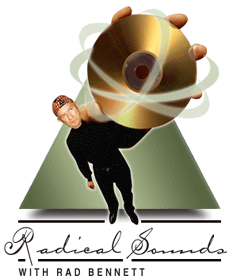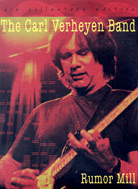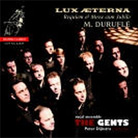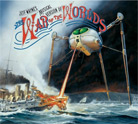 |
| September 1, 2005 More RCA Living Stereo
Most of the other releases were, all or in part, made from three-channel masters, the SACD format allowing them to be heard that way for the first time. The Reiner/CSO recording of Mahler’s Fourth Symphony is a three-channel winner [67901-2], as is Artur Rubinstein’s of Chopin’s Second Piano Concerto (coupled with the First, a warm and transparent two-channel recording) [67902-2]. But it is Van Cliburn’s performances of the Rachmaninoff and Prokofiev Third Piano Concertos that constitute the demonstration disc of this group [67894-2]. The Prokofiev is especially outstanding, the piano rock-solid in the center channel, the orchestra spread out wide and deep behind it. This recording has everything -- presence, warmth, focus, lyricism, excitement -- and stands as a testament to the superiority of three-channel reproduction. Congratulations to all involved in producing it. Now, perhaps, the Erich Leinsdorf Tosca and Turandot, the Leontyne Price Madama Butterfly, the Anna Moffo La Traviata . . . ? Some new Mercury Living Presence three-channel SACDs just came in; I’ll try to report on those next month. And more good news -- Pentatone tells me they have enough Philips four-channel masters from the 1970s to make up releases for the next two years, and have contacted Decca/London about releasing some of their Quad material. On the other hand, EMI remains mum about any high-resolution releases, and Sony Classical, by focusing so much on the DualDisc, seems to have taken a step backward. I’m sure more will be revealed as we head into the winter holidays. In the meantime, try these three very-high-resolution recordings:
Before forming his own band a while back, Carl Verheyen was probably best known as the replacement lead guitarist of Supertramp. But you’ve probably heard him somewhere else as well; the discography included with this set reads like a Who’s Who of popular music. Verheyen has even played on scores written for several popular movies. The music on Rumor Mill is largely blues, though the influences of jazz, classical, and country can be clearly heard. It’s a likable set, if a bit more workmanlike than inspired. But for this column, the sound is the thing. Producer Mark Waldrep has an ear for recording smaller pop groups, and the instruments here have a natural sheen and presence that belie the fact that these are recordings at all. Balances are right on, frequency and dynamic ranges exemplary. The preferred MLP 5.1 mix is by far the most clear and robust, putting the listener right into the music-making. As is usual with AIX releases, there are all sorts of extras, including full video of the recording sessions and a concert staged with a live audience. In my review of AIX’s release of Paul Williams two months ago, I complained about the poor video. The answer here is high-definition-like video that is the best I have seen for any music presentation. The opening shot is of Verheyen’s fingers on his guitar. The strings have sheen, his fingers have pores and prints, and it all looks real enough to touch. I would be very surprised if this two-disc set does not top many best-of-the-year lists.
The Gents is a professional vocal ensemble comprising 16 young men who are graduates of the Roden Boys Choir, one of the best organizations of its sort in the Netherlands. The Gents has quickly become recognized as one of the best chamber choirs in Europe, and its recordings for Channel Classics have received much critical acclaim, some of it in this column. On one disc of this two-disc set, 16 women join the men for the Requiem by French composer Maurice Duruflé. The voices blend ideally for a smooth, rich choral sound impeccably in tune. Rather than use full orchestra to support the singers, conductor Peter Dijkstra uses the composer’s alternate accompaniment for cello and organ. If a bit of color and grandeur are lost in some of the bigger sections, those qualities are replaced by a warmth and intimacy not found in other performances. The works on the second disc are performed by The Gents alone and are impeccably sung. Just hearing that a recording is on the Channel Classics label has come to mean that I assume it will have good sound, and this one does not break the spell. The sound is rich, warm, and transparent, with excellent balance between singers and organ, and the reverb in the rear channels seems just right. The overall mood of this disc is comforting and spiritual -- a great disc to hear late at night or early on a quiet, sunny morning.
Probably the most famous rock story album ever produced, War of the Worlds first appeared in 1978 on two LPs (a CD version followed in 1986). Though other rock epics, such as the Who’s Tommy and Pink Floyd’s The Wall, alluded to a story, War of the Worlds actually tells one based on the original novel by H.G. Wells, expertly mixing songs with clear, incisive narration. Richard Burton stars as the Journalist, his singing counterpart performed by Justin Hayward. David Essex has a big role as the Artilleryman. Now, no doubt spurred by the current release of Steven Spielberg’s flawed and underwhelming film, the whole effort has been remixed and reissued on two SACDs. The results are awesome. The surround sound places the listener in the heart of the action. The recurring electronic "wee-o" Martian theme is panned around the room so that one feels, as does the Journalist, that the Martians have gained control. Other frightening effects include the noise the first Martian ship makes as its grisly controllers unscrew their craft’s massive hatch. The robust music is heard in all 5.1 channels, and the bass is full yet very focused. In fact, there is so much sound here that it seems amazing that it is all so clean, clear, and accurately dispersed. This is a model mix. The recording is also available in a deluxe set that includes additional CDs containing various remixes and previously unreleased material, as well as a presentation book and other goodies. But that set is expensive and only for fanatics. This two-disc version, with its great sound and nicely illustrated text booklet, should do fine for everyone else. Take the money you were going to spend on Spielberg’s film and buy this set. You won’t regret it. There are no visuals, but if you have imagination, that makes it all the scarier. ...Rad Bennett
Ultra Audio is part of the SoundStage! Network. |
 BMG has released a third group
of RCA Living Stereo SACDs, giving one hope that this series, and the format, is here to
stay. I don’t think this group of ten is as strong, overall, as the first two groups,
and am disappointed that there are still no complete operas. Yet there still is plenty of
cause to rejoice. The nearly definitive Jascha Heifetz recordings of the Tchaikovsky and
Brahms violin concertos are here, both recorded with Fritz Reiner and the Chicago Symphony
[67896-2]. The violin passages have never sounded quite so sweet, or had the last measure
of presence that these SACD transfers provide. Another disc presents Charles Munch
conducting the Boston Symphony in Beethoven’s Fifth and Sixth Symphonies [67898-2].
The sturdy, dramatic interpretation of the Fifth is well known, but the jubilant, even
frisky version of the Sixth proved a wonderful discovery. These are both two-channel
recordings.
BMG has released a third group
of RCA Living Stereo SACDs, giving one hope that this series, and the format, is here to
stay. I don’t think this group of ten is as strong, overall, as the first two groups,
and am disappointed that there are still no complete operas. Yet there still is plenty of
cause to rejoice. The nearly definitive Jascha Heifetz recordings of the Tchaikovsky and
Brahms violin concertos are here, both recorded with Fritz Reiner and the Chicago Symphony
[67896-2]. The violin passages have never sounded quite so sweet, or had the last measure
of presence that these SACD transfers provide. Another disc presents Charles Munch
conducting the Boston Symphony in Beethoven’s Fifth and Sixth Symphonies [67898-2].
The sturdy, dramatic interpretation of the Fifth is well known, but the jubilant, even
frisky version of the Sixth proved a wonderful discovery. These are both two-channel
recordings. The Carl Verheyen Band: Rumor Mill
The Carl Verheyen Band: Rumor Mill Duruflé: Requiem, Messe
cum Jubilo, Notre Père
Duruflé: Requiem, Messe
cum Jubilo, Notre Père Jeff Wayne: War of the Worlds
Jeff Wayne: War of the Worlds